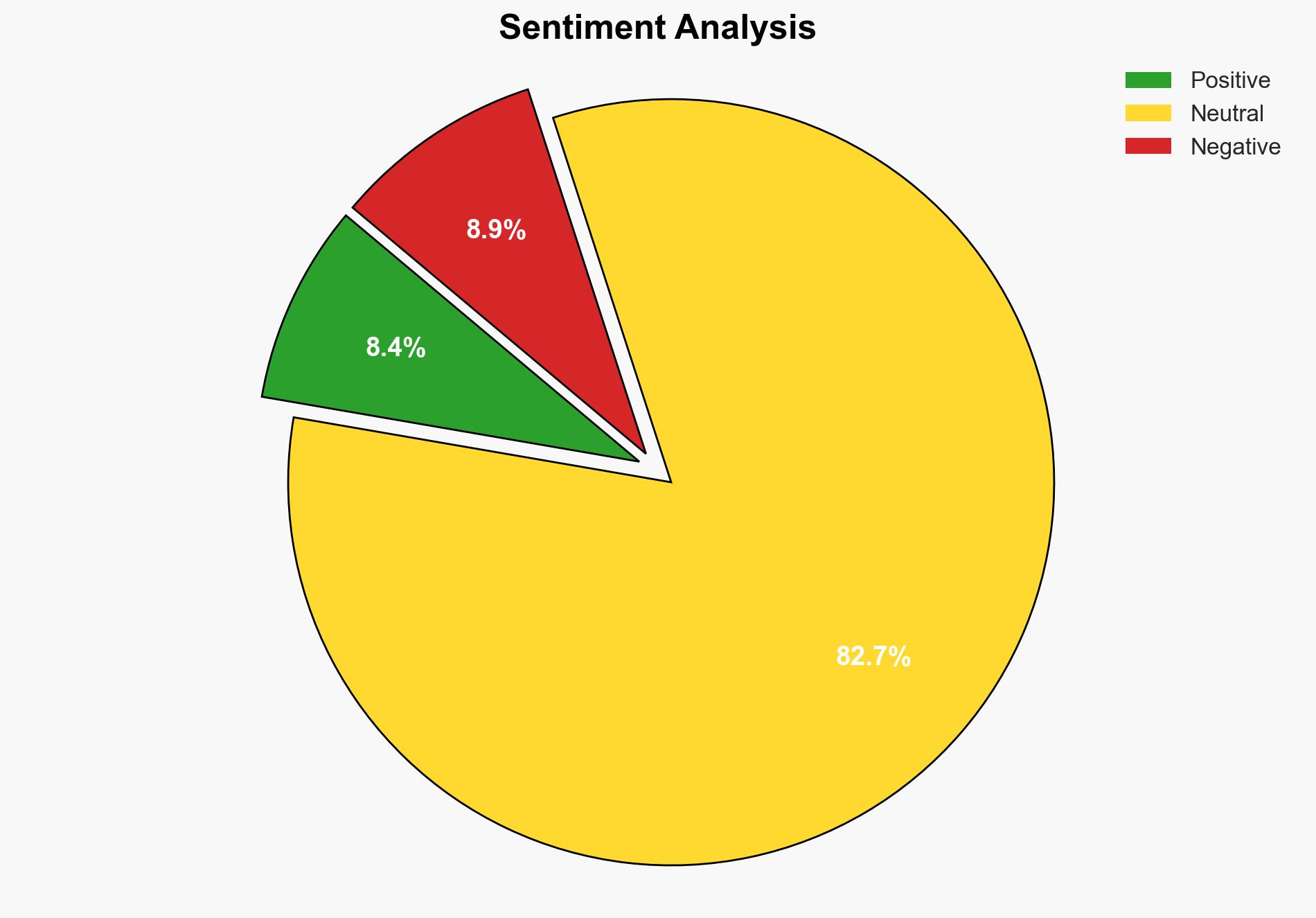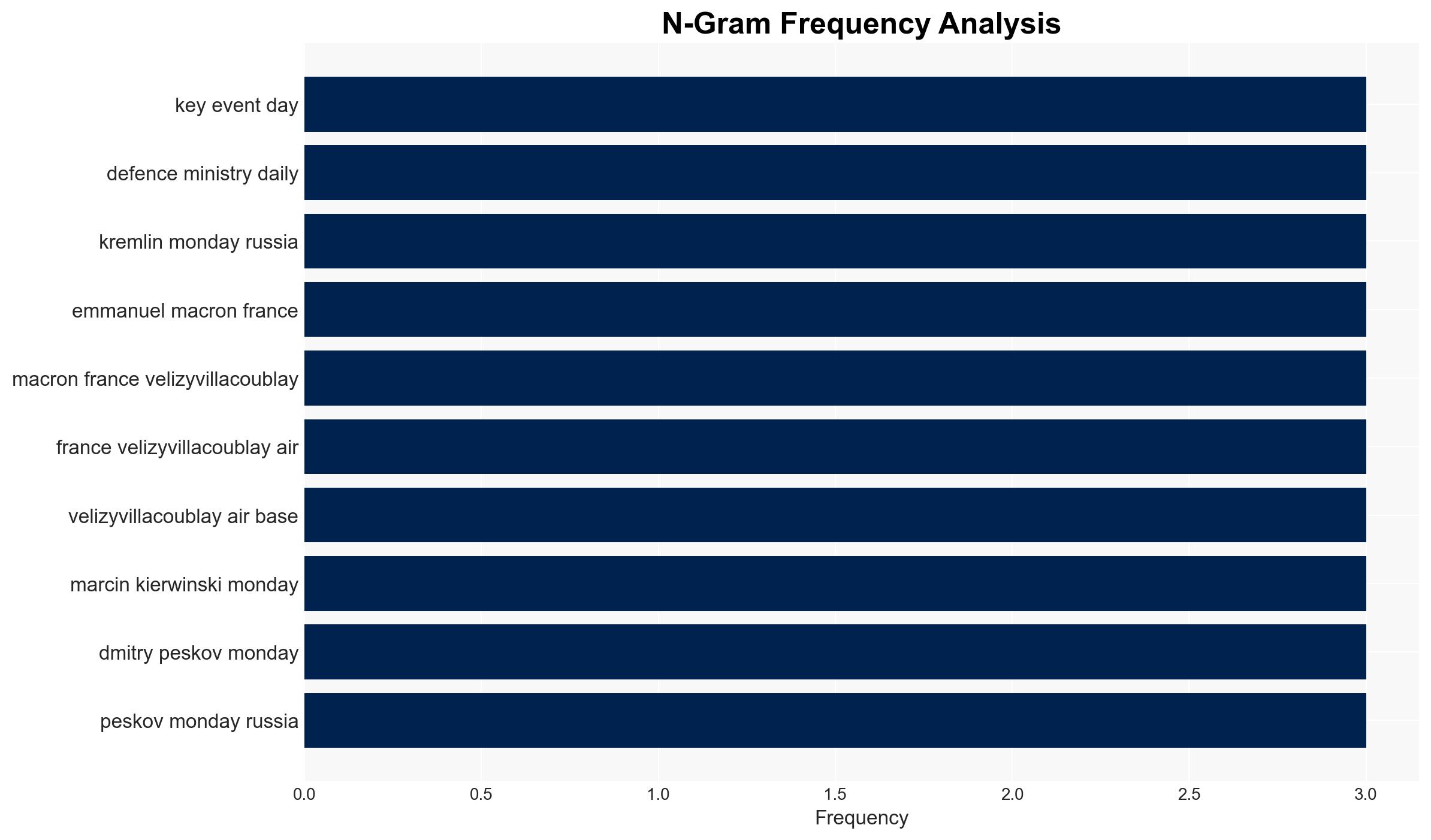Russia-Ukraine war List of key events day 1363 – Al Jazeera English
Published on: 2025-11-18
AI-powered OSINT brief from verified open sources. Automated NLP signal extraction with human verification. See our Methodology and Why WorldWideWatchers.
Intelligence Report:
1. BLUF (Bottom Line Up Front)
The most supported hypothesis is that Russia is intensifying its military operations in Ukraine to consolidate territorial gains and exert pressure on Ukraine and its allies. Confidence level: Moderate. Recommended action: Increase diplomatic efforts to strengthen international coalitions and provide Ukraine with defensive capabilities to deter further aggression.
2. Competing Hypotheses
Hypothesis 1: Russia is escalating military operations to solidify control over strategic regions in Ukraine, aiming to force Ukraine into concessions.
Hypothesis 2: Russia’s actions are primarily defensive, responding to perceived threats from Ukraine and its Western allies, and are not indicative of an intention to expand further.
Assessment: Hypothesis 1 is more likely given the pattern of recent aggressive actions, including missile strikes and territorial captures, which align with Russia’s historical strategy of using military force to achieve political objectives.
3. Key Assumptions and Red Flags
Assumptions: Russia’s military actions are primarily driven by strategic objectives rather than reactive defense. Ukraine’s alliances with Western nations will continue to strengthen.
Red Flags: Increased frequency and intensity of Russian attacks could indicate preparation for a larger offensive. Reports of sabotage in Poland suggest potential Russian attempts to destabilize NATO supply lines.
Deception Indicators: Russian statements minimizing their military objectives or emphasizing defensive motives may be intended to mislead international observers.
4. Implications and Strategic Risks
Continued Russian aggression risks escalating into broader regional conflict, potentially drawing in NATO countries. Economic sanctions may further strain global markets, particularly energy sectors. Cyber and informational warfare could increase, targeting both Ukraine and its allies to sow discord and misinformation.
5. Recommendations and Outlook
- Strengthen NATO’s eastern flank with increased military presence and readiness.
- Enhance cybersecurity measures to protect critical infrastructure in Ukraine and allied nations.
- Engage in diplomatic efforts to isolate Russia internationally and increase support for Ukraine.
- Best-case scenario: Diplomatic resolutions lead to a ceasefire and negotiations.
- Worst-case scenario: Escalation into a broader conflict involving NATO members.
- Most-likely scenario: Continued low-intensity conflict with periodic escalations.
6. Key Individuals and Entities
Vladimir Putin, Volodymyr Zelenskyy, Emmanuel Macron, Marcin Kierwinski, Tomasz Siemoniak, Dmitry Peskov.
7. Thematic Tags
Structured Analytic Techniques Applied
- Cognitive Bias Stress Test: Expose and correct potential biases in assessments through red-teaming and structured challenge.
- Bayesian Scenario Modeling: Use probabilistic forecasting for conflict trajectories or escalation likelihood.
- Network Influence Mapping: Map relationships between state and non-state actors for impact estimation.
Explore more:
National Security Threats Briefs ·
Daily Summary ·
Support us
·





